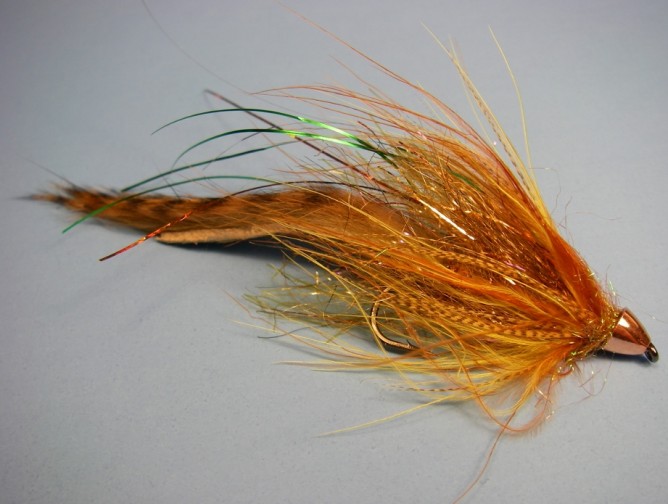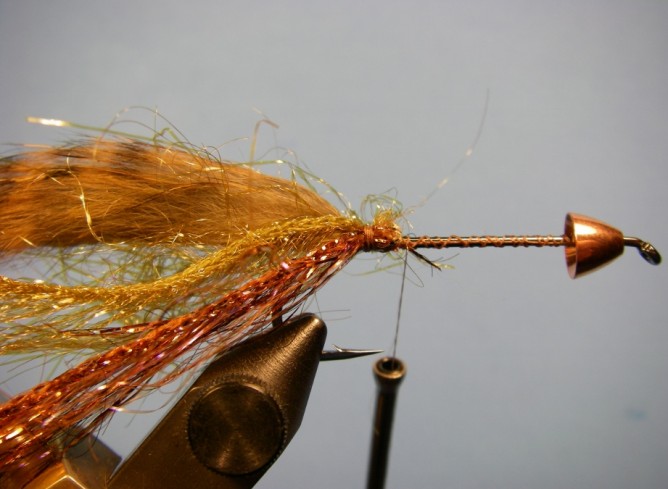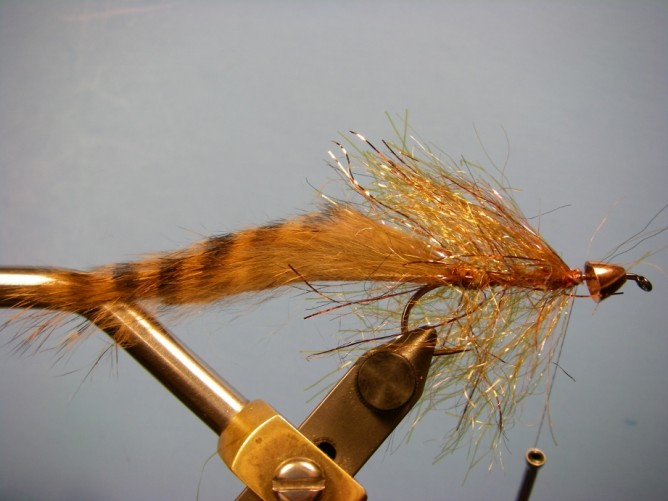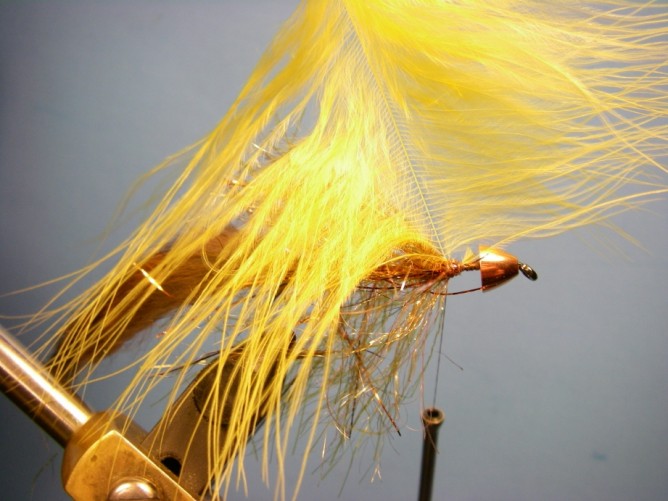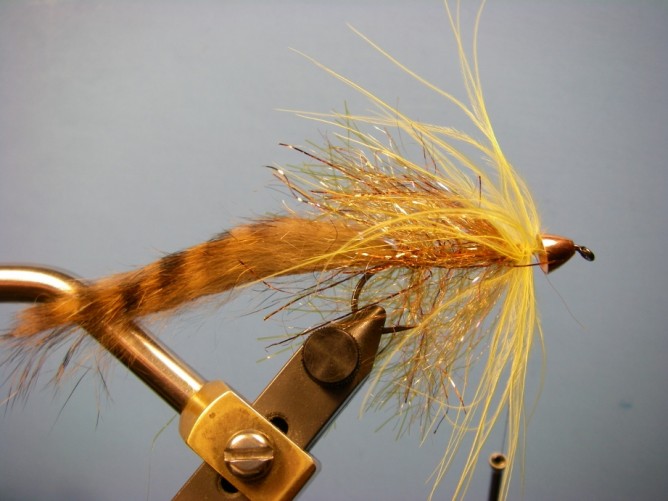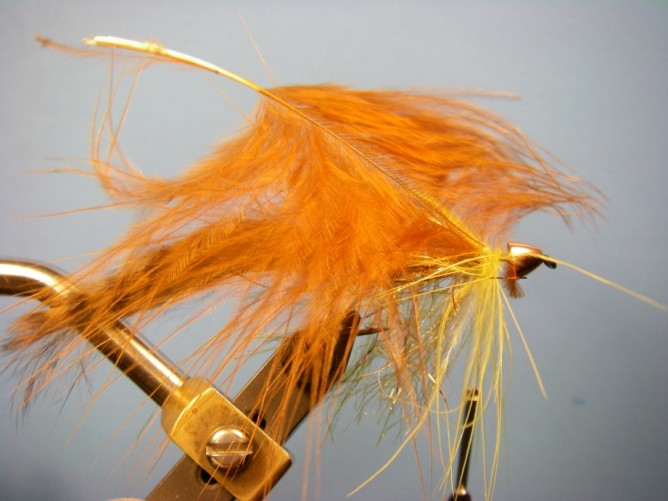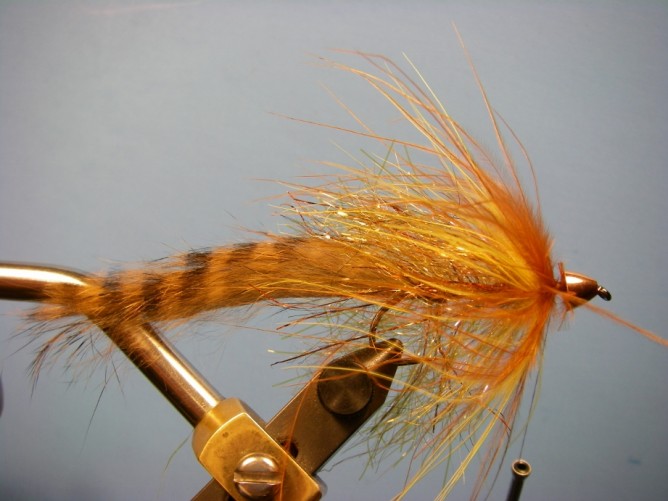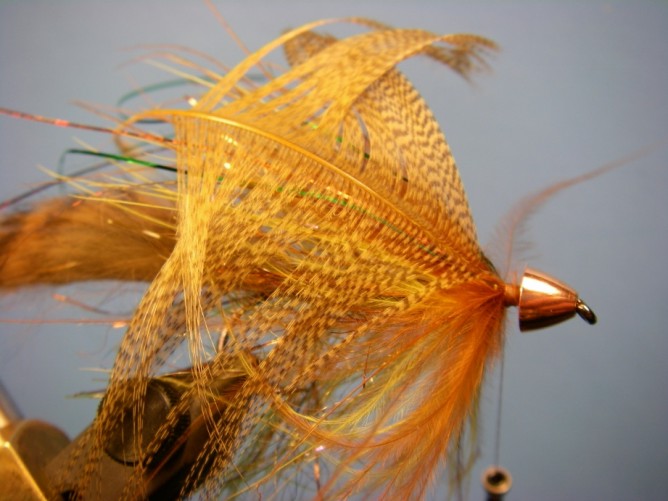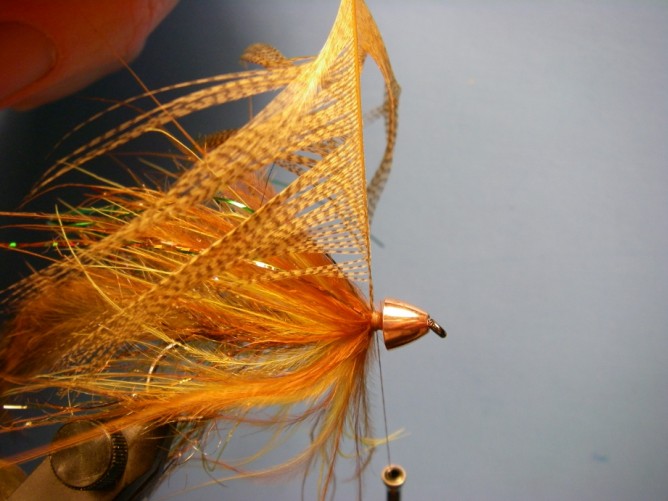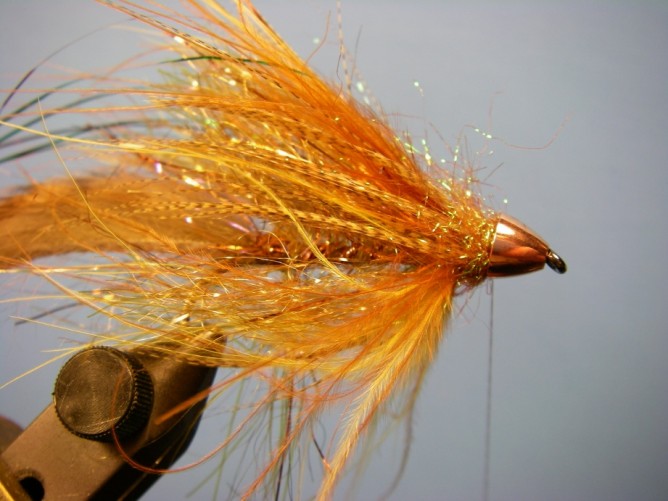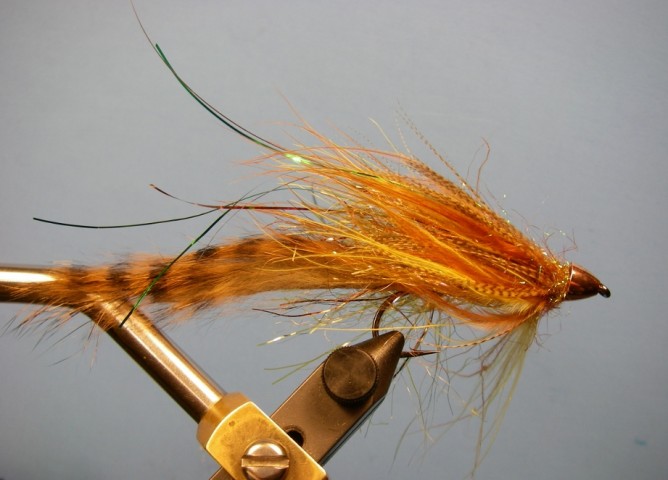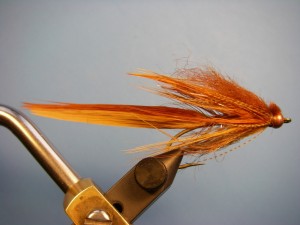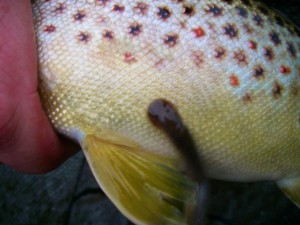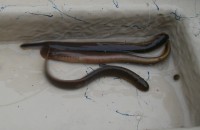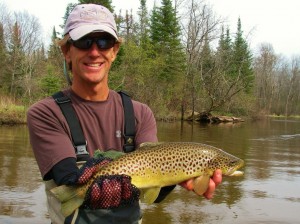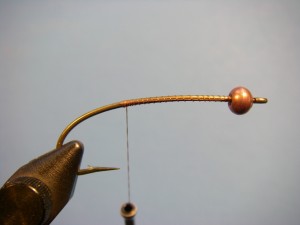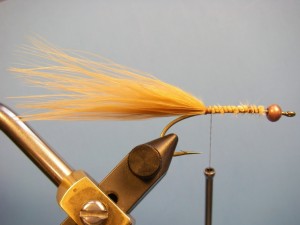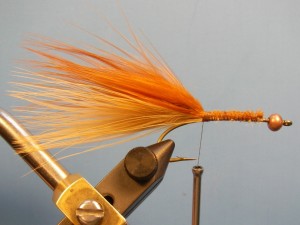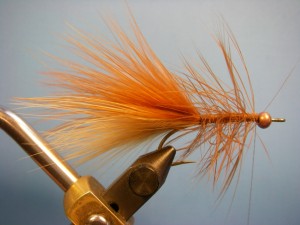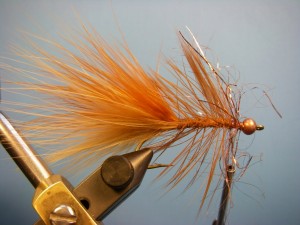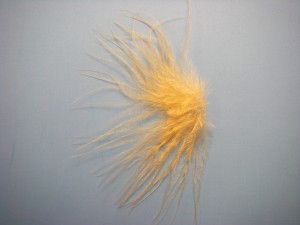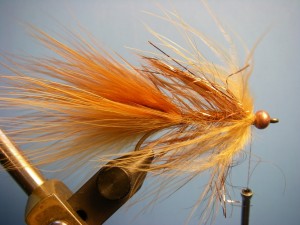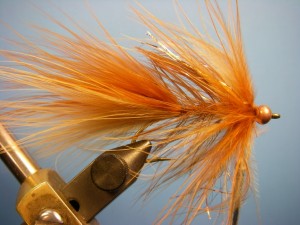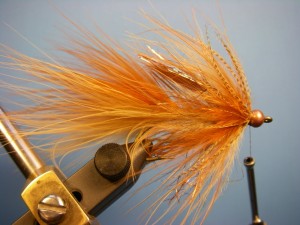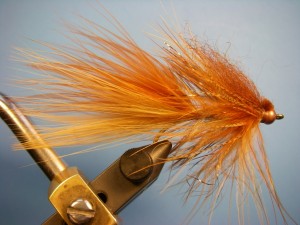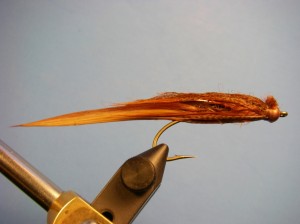While the name of this trout streamer pattern suggests it’s only effective in the fall, it catches fish all year -round and not just here in northern Michigan. While imitating nothing in particular, it suggests a number of common food sources including sculpins, creek chubs, and juvenile trout – staples to most trout’s diet.
This easy to tie fly incorporates colors and materials which often work when proven patterns in the fly box aren’t — making it a go-to pattern when fishing is tough. The long rabbit strip combined with the marabou and cone-head provides nice movement on the pause after a strip. With a bit of flash and a number of natural colors also incorporated, this pattern has just enough attention-getting characteristics and “bling” when the water is stained. But since the colors are relatively muted, it fishes well in clear water, too – which is often the water’s condition come fall.
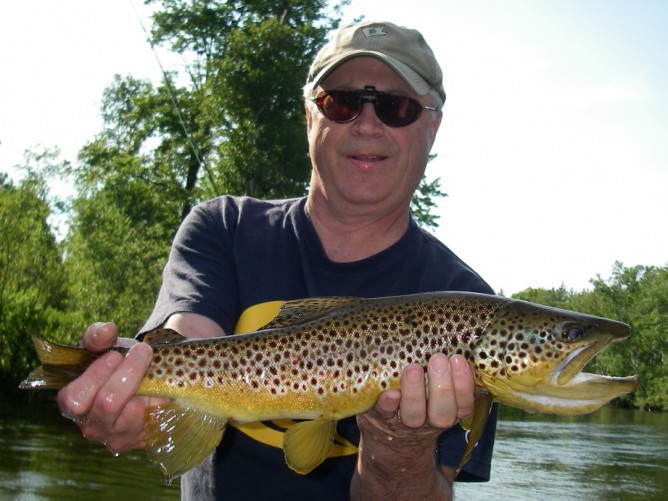 Fish the Autumn Offender on a sink-tip or floating line depending on the water and time of year, and strip it back with a rod twitch and a pause. This streamer pattern has also caught steelhead when swung with a two handed rod and heavy sink-tip. To learn more about streamer fishing techniques read my article, “Tips for better streamer fishing“.
Fish the Autumn Offender on a sink-tip or floating line depending on the water and time of year, and strip it back with a rod twitch and a pause. This streamer pattern has also caught steelhead when swung with a two handed rod and heavy sink-tip. To learn more about streamer fishing techniques read my article, “Tips for better streamer fishing“.
Not into tying streamers? This pattern is available from Rainy’s Flies and can be bought in stocking fly shops.
Recipe:
Hook:
Thread:
Tail:
Weight:
Body:
Wing:
Over Wing:
Collar:
Head:
Gamakatsu S11-4L2H #4
Uni 6/0 – Camel
Rabbit Strip – Black Barred Sand Variant or Brown Barred Tan
Large Cone – Copper
Krystal Hackle – Olive Brown, Large & UV Polar Chenille Rusty Copper
Marabou Blood Quill – Golden Brown & Yellow
Flashabou – Kelly Green and Holographic Copper
Mallard Dyed Wood Duck Flank feather
Ice Dub – Golden Brown
Tying Instructions
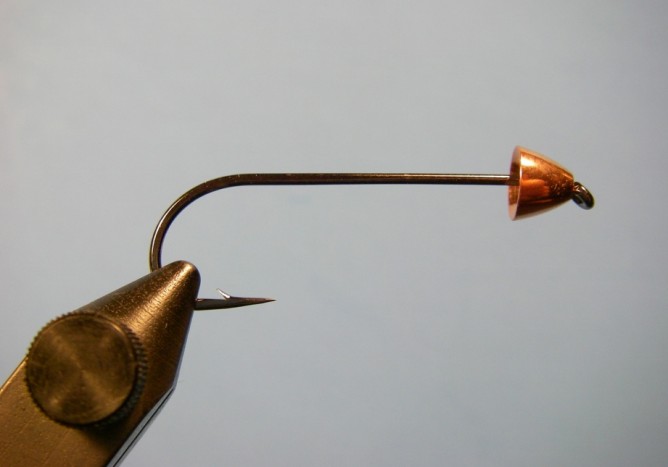 Step 1. Slide cone onto hook by inserting small end through point first. Put hook in vise.
Step 1. Slide cone onto hook by inserting small end through point first. Put hook in vise.
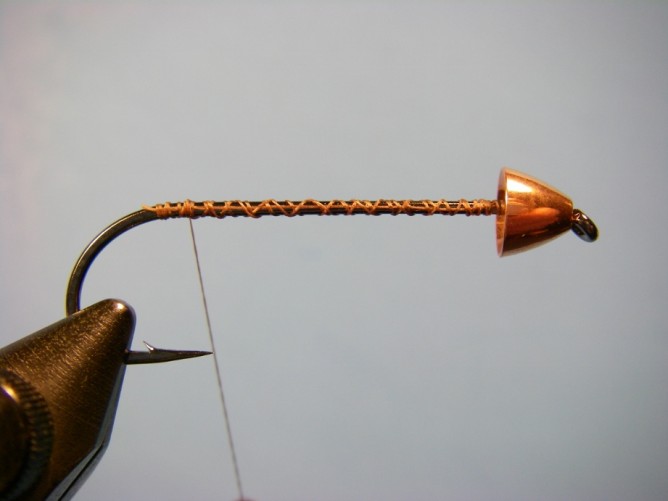 Step 2. Wrap a base layer of thread to above barb.
Step 2. Wrap a base layer of thread to above barb.
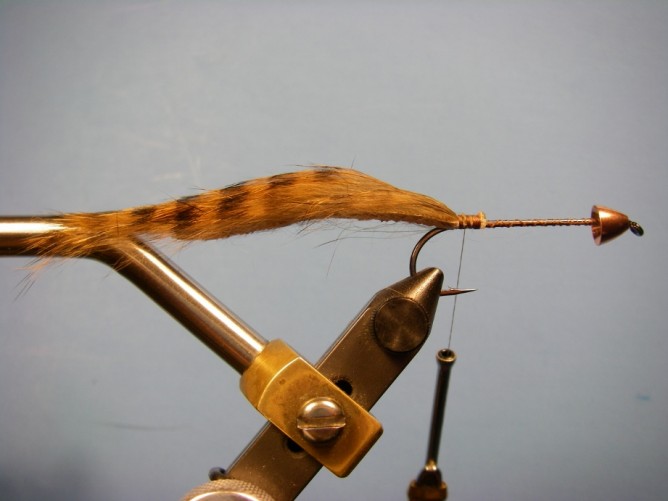 Step 3. Tie in a section of rabbit that is a little longer than hook’s length.
Step 3. Tie in a section of rabbit that is a little longer than hook’s length.
Step 4. Tie in Krystal Hackle and Polar Chenille and at the same time, palmer towards cone
while stroking fibers backwards and stopping 3/8” behind eye.
Step 5. Tie in a yellow marabou feather by its tip and wrap two to three times.
Too much feather results in bulk which has less motion so fewer can be better.
Step 6. Repeat Step 5 but with a golden brown marabou feather.
Tip : A little saliva on your fingers stroked through the marabou
helps manage the materials, making the following steps easier.
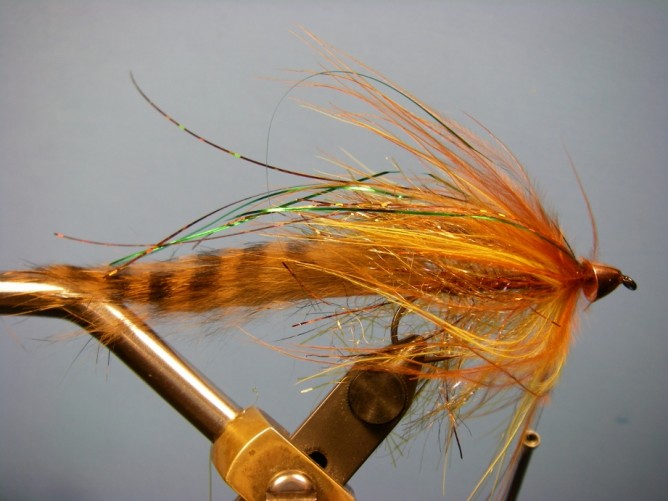 Step 7. Tie in two strands of each color flashabou and tie on top as a wing, not extending
Step 7. Tie in two strands of each color flashabou and tie on top as a wing, not extending
beyond the rabbit strip. Also, keep the ends staggered rather than trimmed to one length.
Step 8. Take the Mallard flank and tie in by the tip. “Fold” the half of the feather on the other side of the
step from you by using your scissor’s edge to crease the fibers. Holding the feather taught, run your
scissors in your other along the feather to “break” the fibers allowing them to flow backwards.
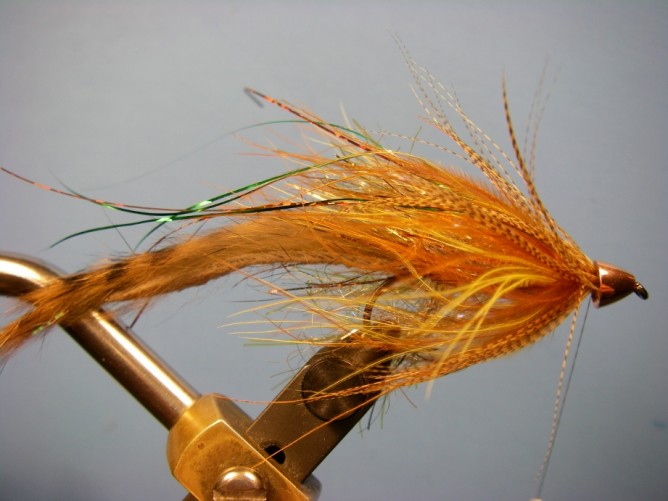
Step 9. Wrap the flank collar two or three times depending on coverage, tie down and trim.
Step 10. Dub a loose “trigger” ball of ice dub between flank and cone and the whip finish.

